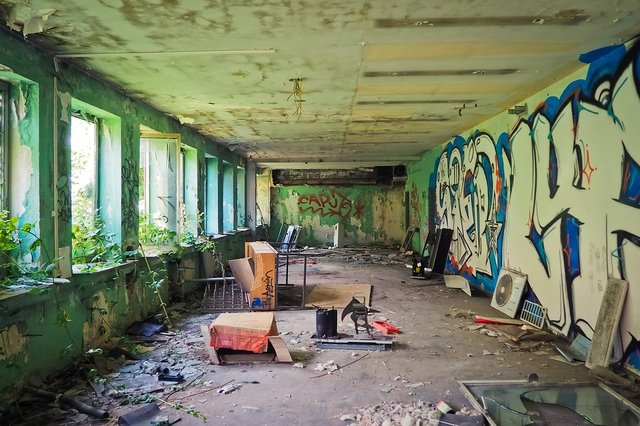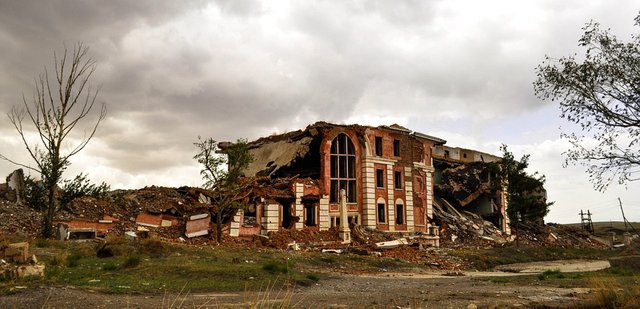Think Gentrification Is Bad? The Opposite Is Worse
Authored by Ryan McMaken via The Mises Institute,
We've long been told that gentrification is the scourge of many communities, and we've become very familiar with the scenario: a stable middle-class community is destroyed when wealthy (usually white) people move in, drive up home prices, and force out the "diverse" population that had been there previously.
There are problems with this narrative of course. Very often, the working-class homeowners who leave the neighborhood experience a windfall from selling their property to the incoming "up and comers" who buy out the aging homeowners. There is an upside.
On the other hand, there are indeed downsides to gentrification.
There are real social costs when a neighborhood disintegrates and the neighbors go their separate ways. As we've noted before, communities with a highly mobile population can often experience more crime, stress, and more health problems.
However, even if we keep all of this in mind, it's important to remember that there is a fate far worse than gentrification. This occurs when people move out of a neighborhood or city — and no one wants to move back in.
We might call this de-gentrification and it can be devastating for those left behind in these communities.
In a recent interview with KCUR in Kansas City, four other guests and I looked at the issue of de-gentrification in some neighborhoods on the eastern side of Kansas City.
The overall phenomenon is one that's become somewhat familiar over the past decade. Due to economic decline, lost jobs, and foreclosures — all interrelated phenomena — real estate in some areas of the country have declined in value so much as to be near zero. In many cases, the homes have become white elephants because the cost of maintaining the property has risen higher than what anyone is willing to pay. When that happens, owners often simply walk away.
Empty houses become a magnet for squatters and drug dealers. Wild animals take up residence in the homes. The homes become fire hazards and a threat to nearby structures.

In many cases, as explored in the KCUR piece, local investors and entrepreneurs have attempted to buy these homes and invest in them. These efforts, however, are complicated by legal problems arising from a lack of clarity as to who the current owners legally are.
Once ownership is resolved, even the most savvy investors may continue to run into problems common to de-gentrification situations. Maintaining residential property is costly, and it's only worth it if the location and condition of the real estate can attract buyers or renters willing to pay enough to cover the costs of maintenance and restoration. As a result, many properties simply sit empty indefinitely. Eventually, the city government ends up bulldozing the property as a health hazard.
Real Estate Always Goes Up!
The phenomenon of de-gentrification helps to illustrate one persistent myth that has often accompanied discussions of real estate: the myth that real estate prices always go up, and that real estate has intrinsic value.
Economist Peter St. Onge notes:
“Buy land — they’re not making any more!” is an old investing chestnut, and a common sense one to boot. Economically, it’s also completely false.
Far from being an asset with some sort of intrinsic, built-in value, land can be rendered worthless or nearly worthless by any number of factors.
We've seen this at work in old rustbelt cities where population growth has dramatically slowed, or even reversed. We've heard of $100 houses in Detroit, and Rockford, Illinois is demolishing houses. Kansas City recently attempted to sell some abandoned homes for $999.
But, if the real estate in question fails to meet conditions that give real estate its value, then even these measures are unlikely to create demand for the homes in the absence of major demographic or economic changes.
And what are these conditions?
St. Onge explains:
Land’s value comes from its economic usefulness. From the value of things that can be done using that land...
Step back a moment and ask why land has value anyway. Why do people want land? Well, obviously, because you can put stuff there — including yourself — plus buildings, swimming pools, and factories.
Now, anybody who’s visited West Texas knows there is plenty of building space in the world. You could drive for hours and meet nobody. There’s lots of space for that factory of yours. But it’s not really space itself that makes land valuable. It’s location. As in, there’s only so much room in Manhattan. Or Central London.
Once again, though, it’s not the actual space that matters. It’s the access. Put a strip mall on Manhattan surrounded by crocodile-filled moats and snipers and it will have low value. The value is in access. So Manhattan is valuable because it’s easy to get to other parts of Manhattan. And it’s easy for other people to get to you. Customers, partners, and friends can all easily visit you if your apartment or office is in Manhattan, moatless and sniperless.
We see this issue of access at work in many of these old rustbelt cities. Once upon a time, those homes provided relatively easy access to employment centers, shopping, entertainment, and other amenities of value to residents. Once jobs began to move away, and once shops began to close, that real estate began to lose its value. It's not enough that a house keep the rain off the residents. To build on St Onge's analogy: if a house is surrounded by dangerous or undesirable conditions, no one will want to live in it.

Moreover, it's important to keep in mind that the mere presence of employment, shopping, and schools is not sufficient to give a home value. Prospective owners will compare that house and that location to other possible locations. That is, homes in neighborhood Y must compete with homes in neighborhoods Z and X. If a neighboring city or another side of town is seen as more desirable, that land and real estate will be relatively undesirable and will cease to have value.
Ultimately, homeowners in these neighborhoods will be wishing a little gentrification would come their way. Instead, they find themselves in neighborhoods with numerous abandoned houses and all the health and safety hazards those bring. Homeowners will unable to sell their properties at prices that make it possible to relocate to other neighborhoods and maintain a similar standard of living. Having spent years paying for maintenance and upkeep of their properities, they one day find the market price has gone to zero because there are no buyers to be had.
It Could Be Worse: It Could be Rural Real Estate
In the long run, these urban houses are still in a better position than many homes and communities that continue to empty throughout rural America. As rural residents continue to abandon rural areas for metropolitan areas, former owners leave stores and homes behind, and the value begins to disappear.
Housing in rural areas has long been largely a function of demand for workers in agriculture and resource extraction. As fewer and fewer humans are necessary for this work, housing and shopping in rural areas will continue to disappear. Rural America is on its way to becoming a sparsely-populated land of octogenarians.
Not even nostalgia will be enough to save it. Those who inherit farmhouses built by their grandparents in, say, the old wheat belt of Western Kansas are unlikely to make the multi-hour drives necessary to keep up with maintenance or live in the properties. The remote locations of these properties render them inconvenient in the extreme, and once again we're left with the issue of access. A farmhouse that's three hours from the nearest metropolitan area suffers from a severe access problem.
Urban neighborhoods, on the other hand — including those that are currently seen as highly undesirable — at least benefit from being relatively close to urban amenities that many desire. In the long run, even these neighborhoods will gentrify, as we've seen happen in Detroit.
So, the next time we're told we need to be deeply concerned about gentrification, it may be helpful to remember that at least many people displaced by gentrification tend to leave their old neighborhoods with some extra money in their pockets. Victims of de-gentrification tend to end up leaving their neighborhoods with nothing at all.
Source : http://www.zerohedge.com/news/2017-09-14/think-gentrification-bad-opposite-worse
Disclaimer : This is not the real Tyler Durden! I read ZeroHedge every day to find the one or two best articles and reformat them for Steemit. I appreciate the upvotes but consider following the account and resteeming the articles that you think deserve attention instead. Thank you! Head over to ZeroHedge.com for more news about cryptocurrency, politics and the economy.
Its not PC to say that gentrification is good but the people enforcing that rule don't think about the alternative. Neighborhoods like people, are born, they live, and die. If you don't despose of the body properly, you're left with a rotting corps. Who wants to live in a rotting corps?
Interesting perspective, thank you.
Resteemed
Congratulations @zer0hedge! You have completed some achievement on Steemit and have been rewarded with new badge(s) :
Click on any badge to view your own Board of Honor on SteemitBoard.
For more information about SteemitBoard, click here
If you no longer want to receive notifications, reply to this comment with the word
STOP